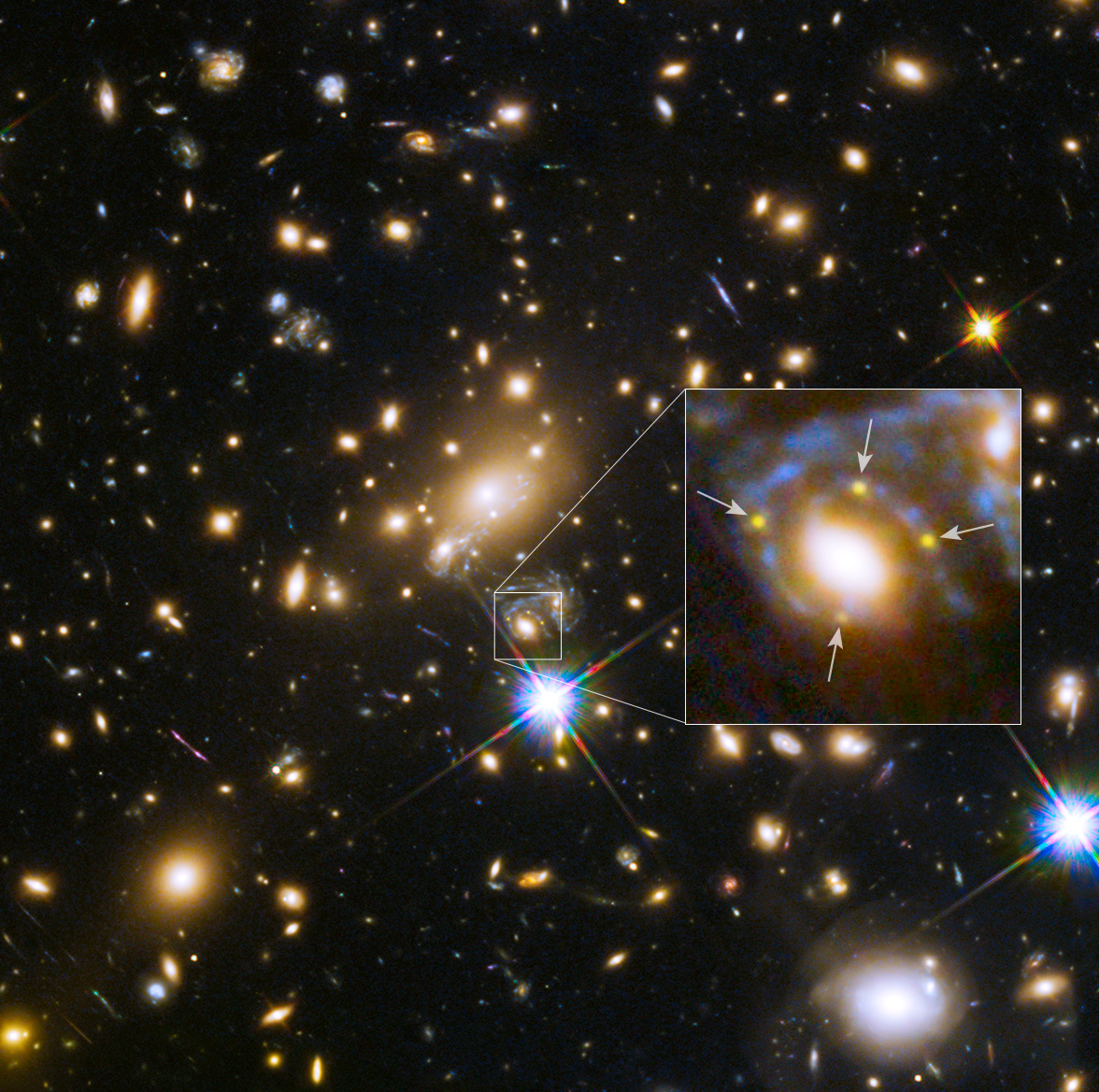
Copyright:
原文:
What are the unusual spots surrounding that galaxy? They are all images of the same supernova. For the first time, a single supernova explosion has been seen split into multiple images by the gravitational lens deflections of intervening masses. In this case the masses are a large galaxy and its home galaxy cluster. The featured image was captured last November by the Earth-orbiting Hubble Space Telescope. The yellow-hued quadruply-imaged Supernova Refsdal occurred in the early universe far behind the cluster. Measuring the locations and time-delays between the supernova images should allow astrophysicists to recover the amount of dark matter in the galaxy and cluster. With patience and luck, a fifth image of the supernova will also be recovered nearby in the next few years. Astrophysicists: Browse 1,000+ codes in the Astrophysics Source Code Library
中文翻譯:
🔭✨ 近期,喺宇宙深處發現了一個令人驚訝嘅景象!🌌 我哋看到咗一顆超新星(Supernova Refsdal)係同一個爆炸事件中,透過重力透鏡效應分別成為多個影像!這是第一次有單一超新星爆炸在多重影像中被捕捉到。這個超新星位於一個遙遠的早期宇宙,佢穿過了一個巨型星系同佢所在的星系團。
🌟 這幅來自哈勃太空望遠鏡(Hubble Space Telescope)嘅圖片,展示咗位於星系後面嘅這個黃橙色的四重影像。我哋可以通過測量這些影像嘅位置和時間延遲,分析到該星系與星系團中的暗物質含量!👁️🗨️ 隨著時間推移,仲有機會再發現一個第五個影像出現。
#SupernovaRefsdal #GravitationalLensing #SpaceExploration #HubbleTelescope #DarkMatter #Astronomy #Astrophysics #Universe #ScienceFacts #CosmicWonder #AstroPhotography
來源:NASA每日圖片


